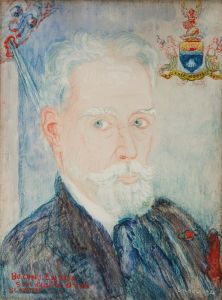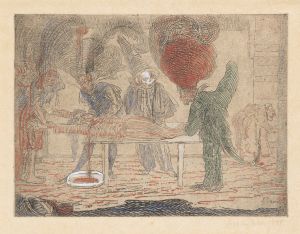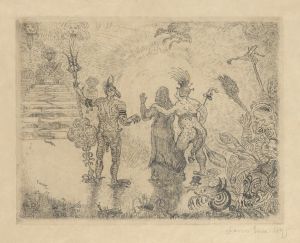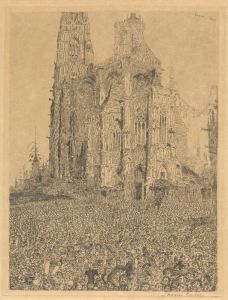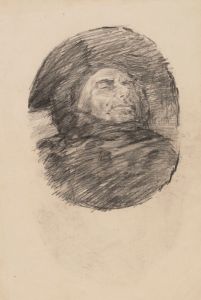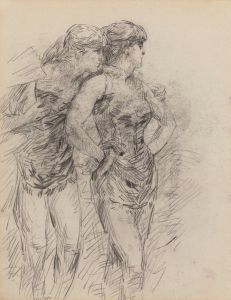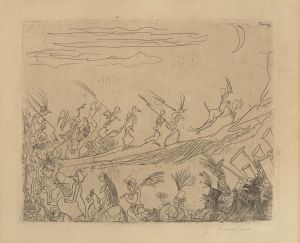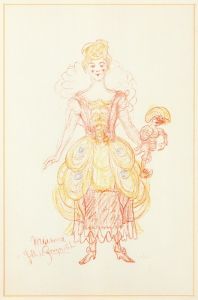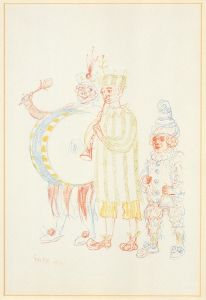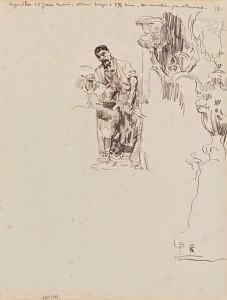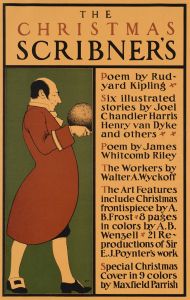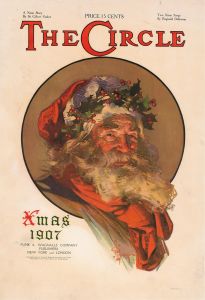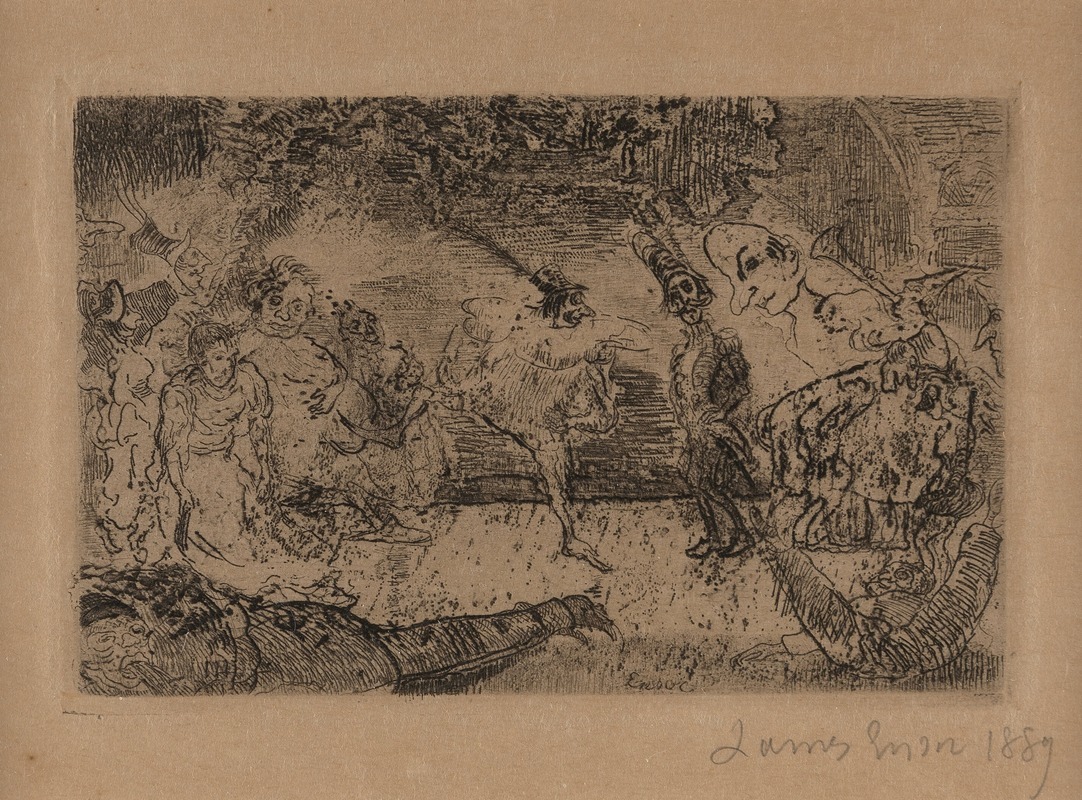
Le bal fantastique
A hand-painted replica of James Ensor’s masterpiece Le bal fantastique, meticulously crafted by professional artists to capture the true essence of the original. Each piece is created with museum-quality canvas and rare mineral pigments, carefully painted by experienced artists with delicate brushstrokes and rich, layered colors to perfectly recreate the texture of the original artwork. Unlike machine-printed reproductions, this hand-painted version brings the painting to life, infused with the artist’s emotions and skill in every stroke. Whether for personal collection or home decoration, it instantly elevates the artistic atmosphere of any space.
James Ensor's "Le bal fantastique" is a notable work by the Belgian painter, who is renowned for his unique style that often blends elements of satire, fantasy, and the grotesque. Ensor, born in 1860 in Ostend, Belgium, was a pivotal figure in the development of modern art, and his works are often associated with the Symbolist movement, although they also exhibit characteristics of Expressionism and Surrealism.
"Le bal fantastique" is a painting that exemplifies Ensor's fascination with masks, carnivals, and the theatrical. These themes are recurrent in his oeuvre and reflect his interest in the absurdity and superficiality of societal norms. Ensor's use of masks can be interpreted as a critique of the facades people wear in daily life, a theme that resonates throughout his body of work.
The painting depicts a fantastical ball, a subject that allows Ensor to explore his interest in the bizarre and the macabre. The scene is populated with figures wearing elaborate and often grotesque masks, creating a sense of chaos and whimsy. Ensor's use of vibrant colors and dynamic composition adds to the sense of movement and energy within the painting, drawing the viewer into the surreal world he has created.
Ensor's technique in "Le bal fantastique" is characterized by his bold use of color and expressive brushwork. He often employed a palette of bright, sometimes clashing colors, which contributed to the unsettling and dreamlike quality of his work. This approach can be seen as a precursor to the later developments in Expressionism, where color and form are used to convey emotional and psychological depth.
The painting also reflects Ensor's interest in the themes of mortality and the passage of time. The masked figures can be seen as a metaphor for the transient nature of life and the inevitability of death, a common motif in Ensor's work. This preoccupation with mortality is often linked to Ensor's personal experiences and the cultural milieu of fin-de-siècle Europe, a period marked by a fascination with death and the afterlife.
"Le bal fantastique" is housed in a private collection, and as such, it is not as widely accessible as some of Ensor's other works, which are held in major museums such as the Royal Museum of Fine Arts in Antwerp and the J. Paul Getty Museum in Los Angeles. However, it remains an important piece within Ensor's oeuvre, showcasing his distinctive style and thematic concerns.
James Ensor's influence on modern art is significant, and his work has been celebrated for its originality and its challenge to conventional artistic norms. "Le bal fantastique" is a testament to Ensor's ability to blend humor, fantasy, and critique in a way that continues to captivate audiences and inspire artists today.





